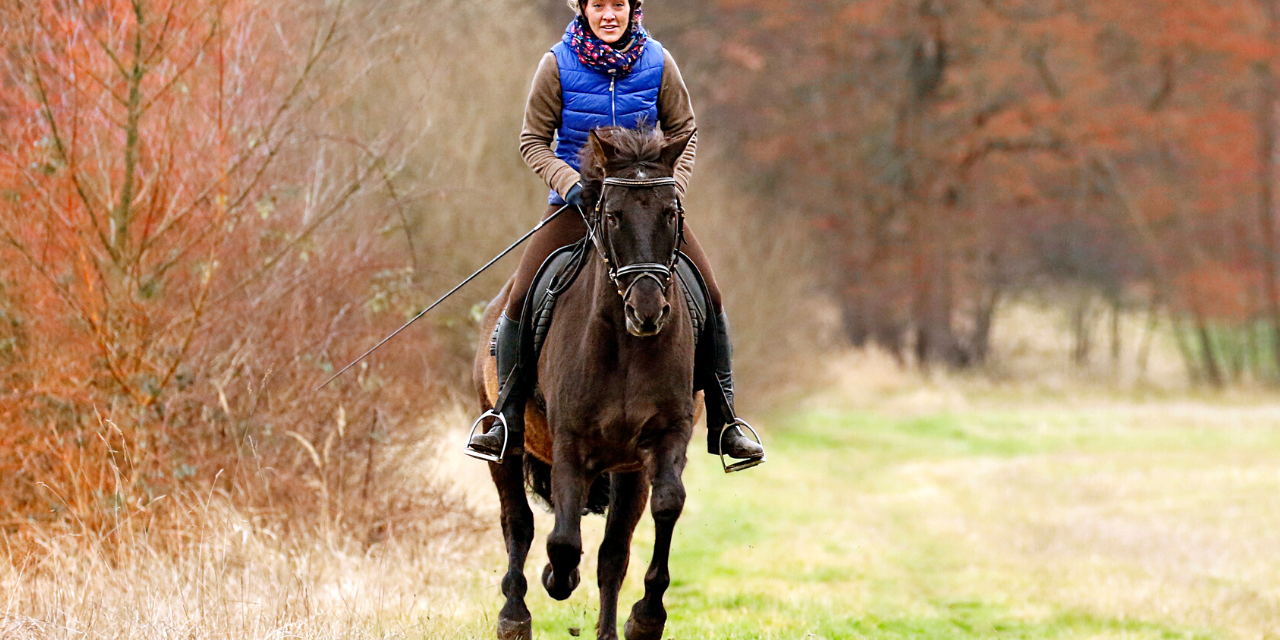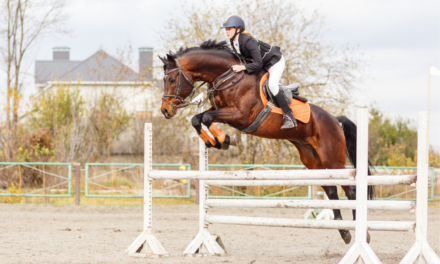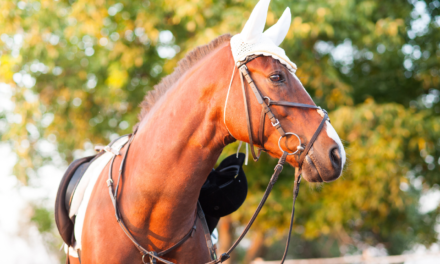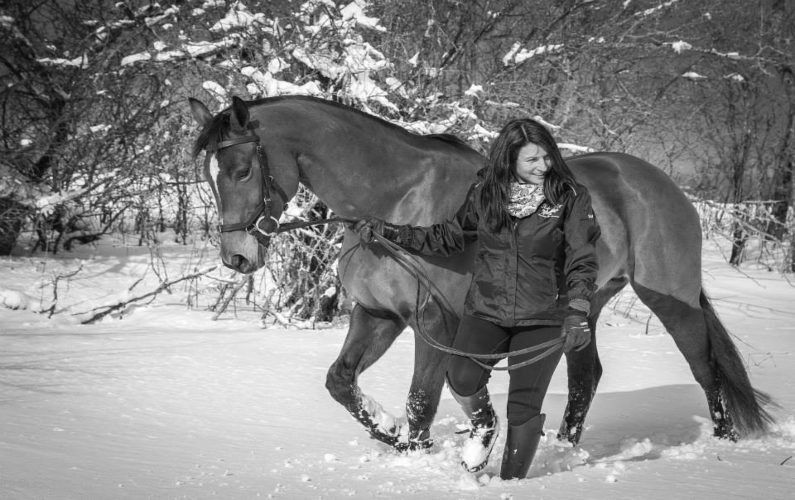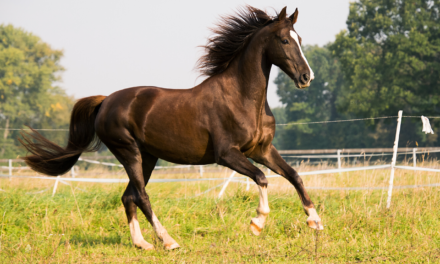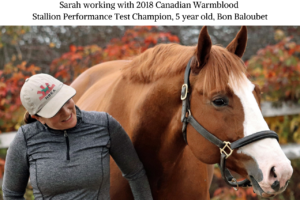We may earn money or products from the companies mentioned in this post. For more information please check out our disclosure page
One of the most common questions I get as a horse trainer is about how to stop horses from spooking on the trail spooky horses on the trail.
Lets face it, when you are on a horse that spooks it can feel pretty scary!
So why do horses spook? In the wild horses are prey animals so they are always on the alert. Heightened senses mean they often react by jumping, spinning, side passing, rearing, or shying away from something when they scared or startled.
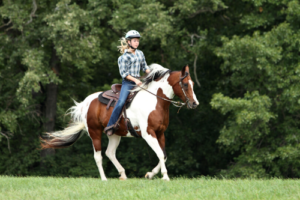 These behaviours can save their lives and no matter how domesticated horses are, these are still their inbuilt natural reactions.
These behaviours can save their lives and no matter how domesticated horses are, these are still their inbuilt natural reactions.
For the rider, a horse spooking can both feel scary and end up being dangerous to you’re your and your horse.
So how do we deal with fixing this?
We need to teach our horse not to spook by doing the right things when our horse spooks on the trail.
Before working with any horse in any situation, exercise, and training, I recommend every horse person to do an evaluation of both their horse and themselves.
Your Horse
We know your horse spooks but that is the symptom, we need to find out all the possible causes. For example:
- Is your horse young, green, or inexperienced?
- Is your horse naturally a more nervous and sensitive horse?
- Has it been desensitized to certain stimulus doing groundwork?
- Does your horse have any other specific behavioural issues?
- Is your horse better or worse when on a trail by itself or with other horses?
The Rider.
It is important to assess our own state of mind and thinking when it comes to riding on the trail. Quite often riders a terrified of their horse spooking, however, this very way of thinking means we hold anxiety and fear that transfer to our horse. The more afraid you are, the more likely your horse will be spooky. So ask yourself:
- Am I nervous?
- Am I afraid?
- Am I transferring these energies to my horse?
- Can I change these things?
- Is my horse suited to me and can I manage his behaviours?
- Do I have the commitment, time and confidence to work through this problem?
It is important to be realistic here, if you are not confident enough to work with your horse to correct his behaviours then it may be that you are not suitable for each other.
You will need to learn what makes your horse nervous and spooky without becoming tense yourself. THIS IS KEY TO SUCCESS!
Without being tense or stressed you will need to be aware of your surroundings while you are out on the trail. Be aware of everything 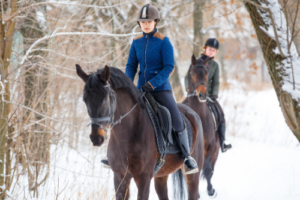 around you and be prepared. Know your horses senses and what sounds might bother him.
around you and be prepared. Know your horses senses and what sounds might bother him.
I know how hard it is to look for anything that causes your horse stress while not getting tense yourself, but this is so important. You need to be a calming presence when your horse is spooky.
If you are confident, determined, and dedicated to fix the issue, with massive amounts of patience over time, you can create a reliable trail partner. This is going to take time but, as with all training with horses, improvements will come if you keep putting on the miles out on the trail.
Warm Up
Quite often horses can be spooky because they are fresh. Try lunging your horse before you go out on the trail, or do a good warm up in an arena or a field first. By doing this you will burn some of your horses energy which will help with a calmer ride
You can also add some ‘surprises’ to see how your horse reacts. Create a noises or have someone help you create a situation that you think might create a spook.
Work at introducing things at home that you might face out on the trail and test your horses reaction.
What are acceptable reactions on the lunge line?
- Bucking
- Playing
- Acceleration
As long as your horse is controllable and listening to you all these behaviours are acceptable energy releasing reactions and will make the trail ride easier
What are unacceptable reactions on the lunge line?
- Explosive behaviour that is hard to control
- Your horse doesn’t listen to you on the lunge line
If your horse seems uncontrollable and over reactive to the sounds and surprises continue lunging until this changes. Once he is controllable and less reactive he is ready to ride on a trail.
Be aware of the signs your horse is going to spook!
Because horses are prey animals their natural reaction is to run from things that frighten them.
When working with a spooky horse I use props that I place around their paddock such as hanging a flag, or I tie a tarp to something. Don’t be afraid to be inventive!
You can practice observation of your horse’s actions by introducing them to scary things while they are loose in a paddock or arena and seeing what their reaction is.
Horses fear reaction:
- Your horse will stand alert, tense, with its head raised
- Ears will be forward but will also flick rapidly back and forth as it is assessing its surroundings
- Your horse will run away from a fearful situation, such as a flag or a tarp
- Once they are a short distance away from the problem they will stop, turn and look back at the thing that scared them.
- They will then approach the scary object. Horses are inquisitive and your horse will go and study the object.
When you are out trail riding you will need to be aware of those signs. You will feel your horse’s body language start to change.
This is the point that you can take control!
Take action before your horse fully reacts!
Stop your horse and allow him to face the thing that is scaring him.
DO NOT allow him to turn and run away. Stay calm, be patient, and keep asking him to stand still and look at the thing that is scary.
If you can do this your horse will eventually accept it the same way that they do in their paddock. You are helping your horse overcome his fear, talk to him and be reassuring.
Stay calm and make sure you are not tense. Try to relax your body and don’t over use your reins, if you keep too tight a hold of the reins your horse will feel tension and become more agitated.
Guide him to stand still and then relax your hand and seat. Repeat if necessary as much as you need to but always remember to release pressure every time your horse is where you want him to stand.
If your horse moves guide him back to face the thing that scares him and ask him to stand. He will eventually show less concern and as he does ask him to move a few steps towards the object and then stop him (you need to stop him not wait for him to stop).
Always sooth, encourage, talk, and stroke his neck.
When your horse relaxes a little, repeat the above always asking him to stop before he takes charge and stops on his own. You want him to trust you and respond to your cues.
This might take a few tries but try to get him close enough to let him smell the object if he wants to.
Then move your horse so that he's parallel to the scary object. Walk a few steps so that the object is at his hip or behind him, and stop again.
If he can accept the obstacle behind him without spooking, you've succeeded!
You can do this every time your horse experiences something spooky. Yes this will be tedious at first, but in reality you are training your horse to trust you and eventually, over time, your horse will trust that you will not lead him to anything dangerous.
The world will become less scary and trail rides will become more enjoyable.
If you lose control at any point, lock your horses head around to your leg on one side and let him circle round and round until he stands. Gradually release the rein and allow your horse to straighten and approach the object again.
You can repeat this any time you feel your horse has gained control. This way you get the control back
If you are nervous or afraid your horse may spook or bolt and don’t feel confident to control the situation, dismount, and perform the same routine of approaching the object that scares your horse from the ground so you feel safe.
You'll be safer on the ground, and you'll still help your horse deal with his insecurities.
admin
Latest posts by admin (see all)
- A Horse For All Reasons – Guest Blog by Lucy from Horse Factbook - April 8, 2020
- How To Deal With A Spooky Horse Trail Riding - March 31, 2020
- Our Top 20 Amazon Equestrian Products - January 30, 2020

